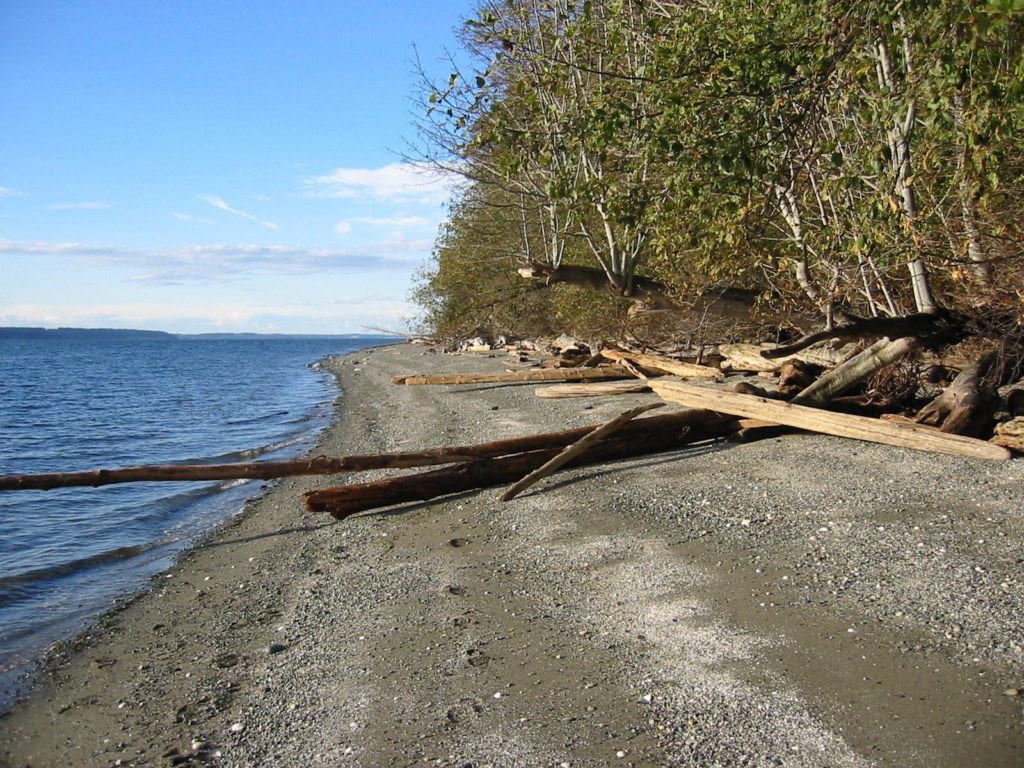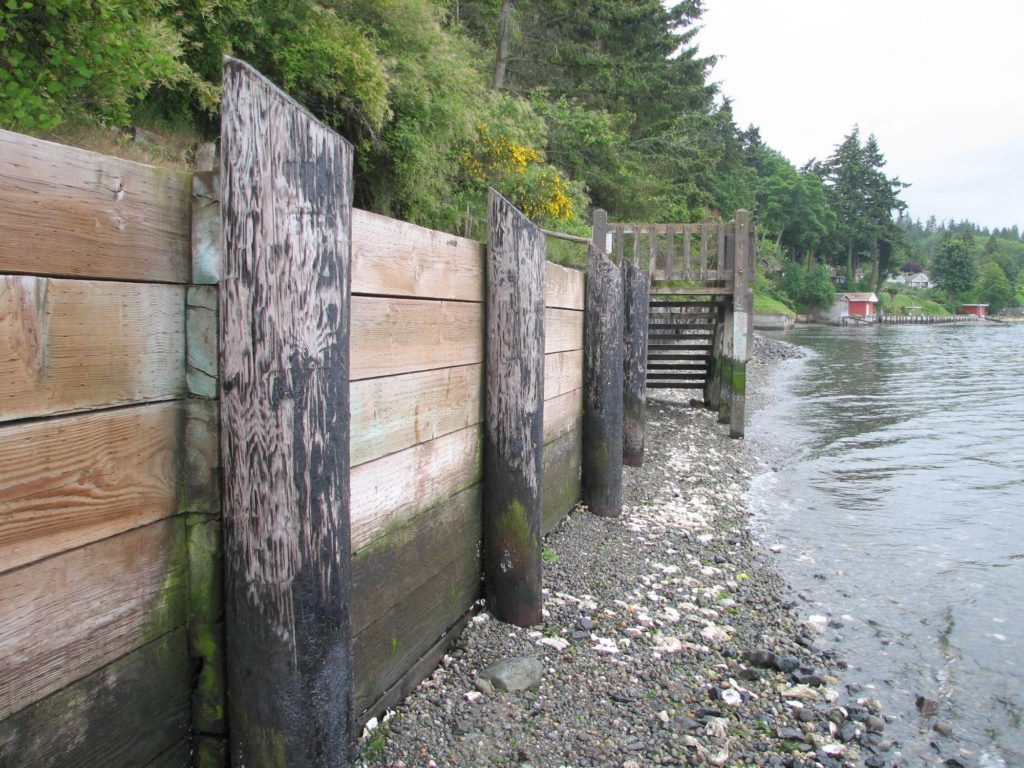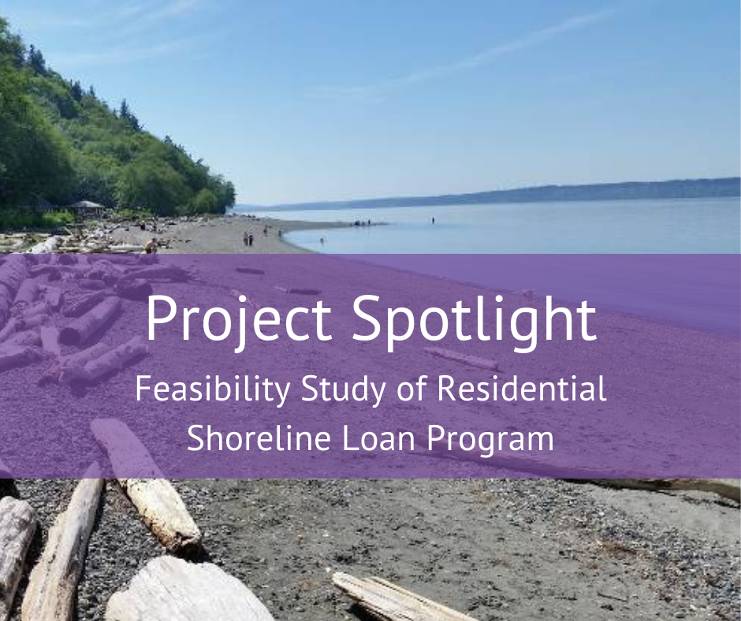We have an update to this post! Check out the update at “Could a Revolving Loan Fund Help Puget Sound Shorelines?”

Approximately 715 miles, or 29% of Puget Sound shoreline, is lined with bulkheads, seawalls, and other protective “hard armor” (Coastal Geologic Services 2017). Shoreline armor degrades beaches and habitat for salmon, forage fish, and key species critical for orca recovery. Since 2014, local Shore Friendly programs have engaged with hundreds of marine waterfront landowners to encourage voluntary removal of damaging shoreline armor. While there have been successes in armor removal and restoration, many landowners say they either lack funds or are unwilling to pay for sometimes costly shoreline restorations.
To promote healthy shorelines, and support the Shoreline Armoring Implementation Strategy, the Habitat Strategic Initiative has funded a project with the Puget Sound Institute, in collaboration with Coastal Geologic Services and Northern Economics, to look at ways to reduce the financial barriers landowners face when doing shoreline restoration projects. The grantees will conduct a feasibility study on the development of a self-sustaining Revolving Loan Fund program to provide landowners with low-interest loans for shoreline management projects.
Soft shorelines improve water quality, provide fisheries habitat, increase biodiversity, and promote recreation.
Bulkheads like the one pictured prevent natural migration and may create seaward erosion.
Healthy beaches provide habitat for prey species for our resident orcas.
Revolving Loan Fund
A revolving loan fund uses seed money to capitalize a managed fund that is used to make loans. The fund is replenished as loans are repaid, resulting in ongoing financing for new loans and program administration. A revolving loan fund program for armor removal could address the construction funding need faced by residential property owners when seeking to reduce shoreline impacts on their property through actions such as armor removal, soft-shore stabilization, and/or sea level risk reduction.
Did you know?
Shoreline armor damages beaches and degrades critical habitat for fish and wildlife. As sea level rises, armor can cause more damage by preventing shoreline habitats from shifting inland. Waterfront landowners are increasingly concerned about coastal flooding and interested in options like elevating and moving homes inland. When combined with armor removal, these adaptation measures can increase the resilience of both human and ecological communities.
What can you do?
Shoreline landowners can visit www.shorefriendly.org to learn about healthy beaches and resources available to help protect your property and PugetSound.
More Info
Click here to read more about Puget Sound Institute and the project. The project is estimated to be completed in late 2020.
The Shoreline Armoring Implementation Strategy emphasizes the role of incentive programs for helping change societal norms around the management of residential shoreline properties. The Implementation Strategy recommends increasing the portfolio of financial incentives available to property owners to help ensure that incentive programs are able to achieve on-the-ground ecosystem outcomes.

